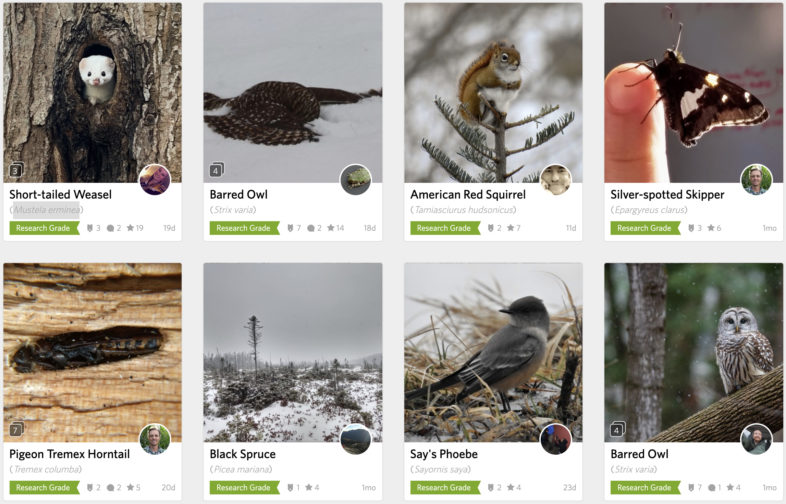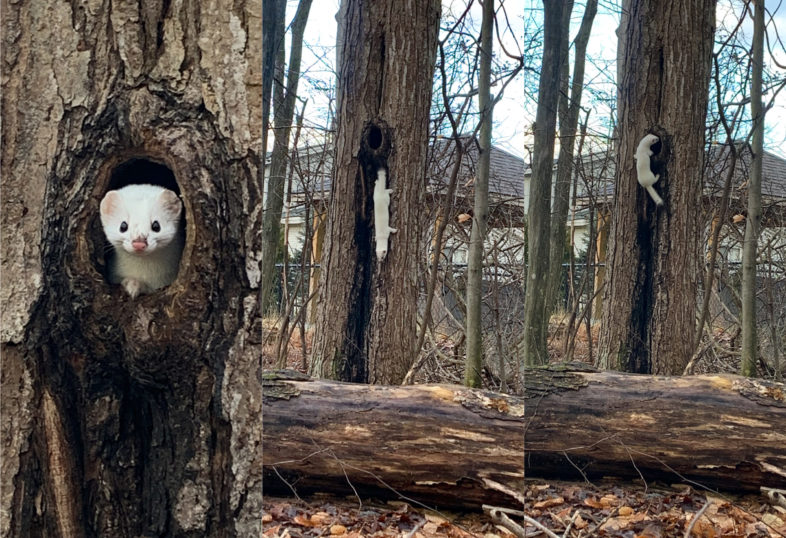Congratulations to Madison Alderman for winning the January 2020 Vermont Atlas of Life iNaturalist photo-observation of the month. The image of a Short-tailed Weasel (Mustela erminea) cloaked in white and peering from a hole in a tree in Rutland, Vermont garnered the most votes.
The Short-tailed Weasel is the second smallest member of the weasel family. Like the long- tailed weasel and its other relatives, the Short-tailed Weasel, also known as the ermine, is a predator. Weasels will burrow, or build, a nest in rock or wood piles, in a hollow tree, or under a building. Often, rather than building their own nest site, they will simply take over one of their prey’s. The Short-tailed Weasel hunts voles, shrews, cottontail rabbits, rats, chipmunks and nesting birds. Males normally take larger prey items than the females. Short-tailed weasels will also store, or cache, extra food for later use. In summer, they also eat fruit and berries.
It is the changing day length, not the drop in temperatures, which initiates the color shift from brown to white in the fur in the winter. The waning hours of daylight trigger a response in the hypothalamus, commonly referred to as the “master gland”, and cause animals to undergo many changes that help them survive the winter, including changes in coat color and thickness.

With nearly 1,400 photo-observations submitted by 158 observers this month, it was very competitive. Click on the image to see and explore all of the amazing photo-observations.
Visit the Vermont Atlas of Life on iNaturalist where you can vote for the winner this month by clicking the ‘fav’ star on your favorite photo-observation. Make sure you get outdoors and record the biodiversity around you, then submit your discoveries and you could be a winner!


I wanted to thank everyone for loving this photo and voting this photo the photo of the month. There is a magical story behind this photo. I came home to let my dog out and saw a white flash. I followed this white blob until I thought o lost it but I looked up and it was magical. There is such a bigger story behind this photo. As an atheist, for a moment I questioned the magic of the natural world.